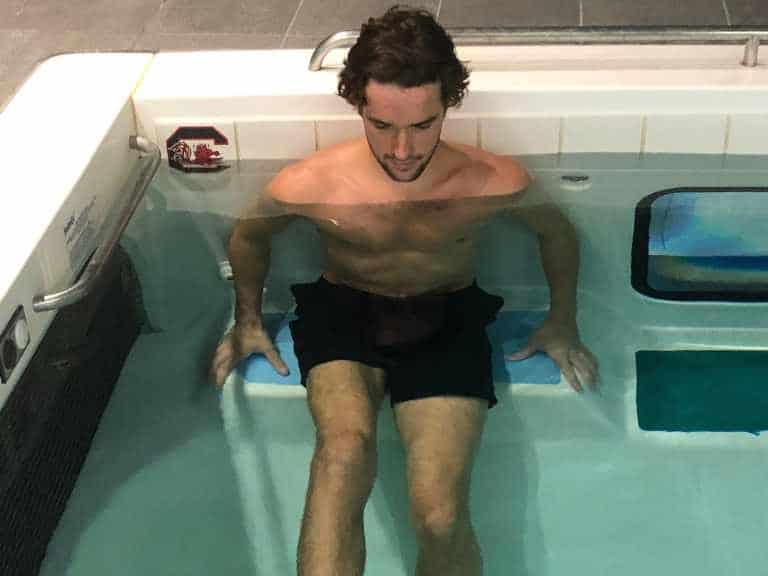
When Kelsey Stranc, athletic trainer for Cross-Country and Track at University of South Carolina, gets her athletes in their 600 TDW, you can be sure she’s getting the most out of each session. Equipped with eight independent workstations, an integrated underwater treadmill, and stabilization bars for core work, the pool is consistently used for athlete recovery in almost all post-operative cases.
But aquatic therapy doesn’t stop there. Highlighting the versatility of the 600 TDW, Kelsey shares how she and her colleagues are using the pool to keep their athletes healthy and get them ready to compete.
Workstations add versatility
Kelsey loves how she can use the pool’s different workstations with her athletes. “I love how versatile they are,” Kelsey said. “For post-op athletes, I try to get them in the pool early – as soon as stitches are out. Even if they are doing some of the same exercises they would do on land, it feels different to them in the pool. We’ve gotten pretty creative with how we are using the workstations. And everyone loves getting in the water, even the athletes that aren’t swimmers!”
Kelsey uses the angled plyo pads with her jumpers, in addition to using the treadmill. “We also use the metal bars in the pool to do some core work,” she said.
Fall 2022 has been a particularly rough season for injuries. “We’ve had a distance runner with a tibial stress fracture, a hip labral tear for another runner,” Kelsey said. “We recently had three surgical cases, plus a hurdler with bone spurs, and a jumper with patellar tendonitis. They’ll all get in the pool for rehab.”
Using the pool for return-to-running protocols is particularly beneficial. “From a mental health perspective, the athletes feel like they can do more in the pool than what they can accomplish on land,” Kelsey said. “These athletes are true competitors, so it’s good for them to have that confidence and feel less frustrated. It also helps with their muscle memory.”
Athlete recovery success story
In Spring 2022, on the first day of the SEC Outdoor Track & Field Championships, one of Kelsey’s middle-distance runners was struck by a car. “It was such a scary call to get, and his condition in the ER was particularly frightening.” Kelsey said. She missed the competition and instead stayed at the hospital with the injured runner, eventually traveling back to South Carolina for further medical evaluation.
The athlete suffered a broken neck, but fortunately, his spinal cord was not damaged. “I was grateful there wasn’t further damage to his spine, but his right leg was a mess,” Kelsey said. “He needed a meniscal repair and ACL and MCL reconstruction surgery, which was done the day after Memorial Day.”
Even with the neck brace and leg brace, Kelsey got the athlete in the pool as soon as his stitches came out. “He was stuck in the dorm all summer; he’s an international student and couldn’t go home,” Kelsey said. “The pool was a great relief for him, he loved it. I got him in the pool just 3 weeks after surgery. We started with his leg just floating in the water, working our way up to gait training, walking, and running.”
Kelsey is optimistic he’ll be ready for track workouts in January and ready to compete in the outdoor season.
No doubt this runner is incredibly grateful for having Kelsey by his side during such a stressful time. This athlete recovery success story highlights just how essential athletic trainers are for the health and well-being of their athletes. Thank you, Kelsey!
~ Authored by Kristine Chochrek